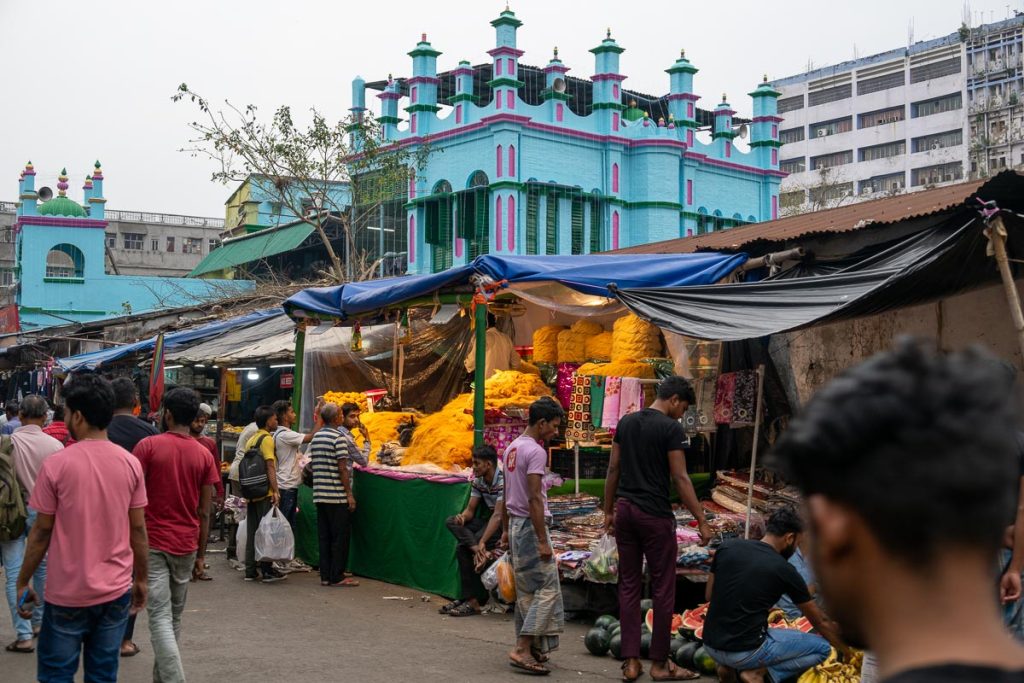
Noisy, dirty, decaying, dishevelled, busy, crowded, unorganised, chaotic and pungent. These are just some of the crueller adjectives used to describe Kolkata the capital of West Bengal in India. They may well all be true as far as descriptive language goes, but having been there, we rather liked it. If we were to describe the metropolis, we might suggest it as, effervescent, bustling, or vivacious. And yes, we would have to concede that sometimes, the aroma is less fragrant to that of some other cities. The streets are alive and booming with life’s energy. The cacophony of car horns, traffic jams, vendors cries, and buzzing motorbikes just add to that vibrancy.
History
In 1690, an agent of the East India Company chose what would become Calcutta as a British trade settlement. Carefully selected, it was protected by the Hooghly River on the west, and a creek to the north. Salt lakes lay to the east. The Mughal emperor granted the East India Company freedom of trade in return for a yearly payment of 3,000 rupees. 60 years later, Calcutta had a population of 120,000 and had become the commercial centre of Bengal.
The city underwent rapid industrial growth in the textile sector and became a major shipping hub. In 1864 a major cyclone all but destroyed the city, killing over 60,000 people, but it bounced back. It was, for many years, the capital of India and only lost that title in 1911. Lord Curzon, then the Viceroy of India wished to appease local feelings. He insisted that the capital city was returned to Delhi where it had been before the time of the British. Over time, Calcutta grew, mostly in an unplanned way, and now has a metropolitan population more than 15 million.
Stay
The Grand Oberoi Hotel has been part of the landscape of Kolkata for more than a century. It is fondly referred to as The Grand Dame of Chowringhee and it is a somewhat fitting title.
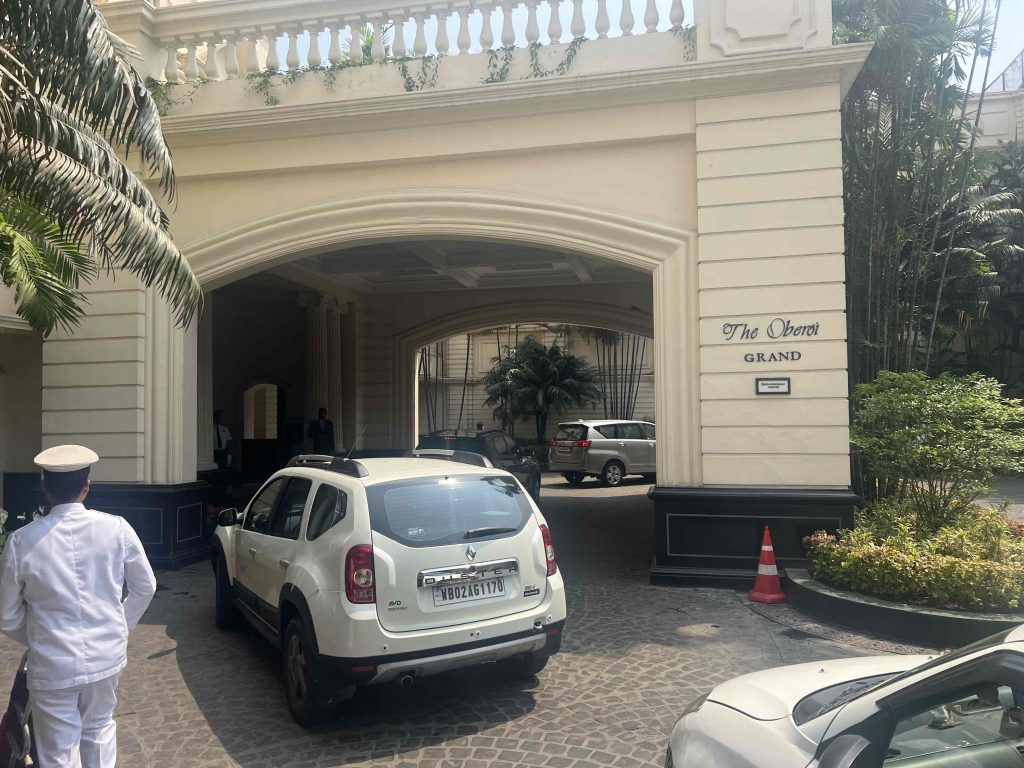
As travel writers, we get to stay in some fabulous hotels around the world. But this one has instantly risen to share a place with the rest of our top five world hotels. It began life in as the personal mansion home of Colonel Grand. He was a well-heeled officer serving with the British India Army. It passed through the hands of Mrs Annie Monk. She was an Irish landlady who bestowed upon it, some repute.
Then it fell into the hands of Arathoon Stephen an Armenian chancer. He created the beginnings of a world class hotel. It was he who bestowed upon the building its grand staircase, with balustrades of Burmese teak. The marble fountain built out a single block of stone was installed by him. As was the chandelier of the finest crystal that today hangs I the lobby.
The hotel did well as its fame spread but it never truly flourished until Mohan Singh Oberoi appeared on the scene. Since the day the hotel took his name The Grand Oberoi has never looked back. Now it stands as the flagship of India’s best known hotel chain. Still in the hands of the Oberoi family it is, in our opinion, the only place to stay in Kolkata.
Visit
Step back in time at the Indian Museum in Kolkata. Do so quite literally! The layout resembles that of museums we remember as children.
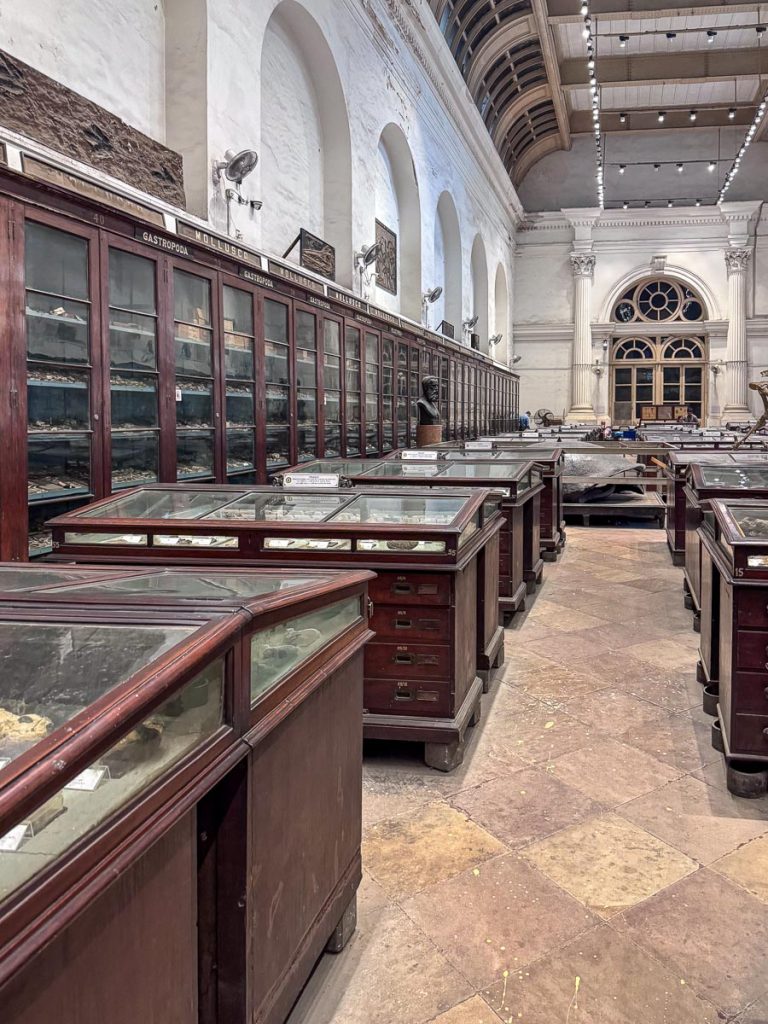
Cemeteries often offer travel writers like us historical insights into locations they are writing about. South St Cemetery in Kolkata is no exception, but we recommend that you do not visit when it’s raining!
Underneath the famous Howrah Bridge is the Mullick Ghat the largest flower market in Asia. It opens 5.30 in the morning every day of the year and closes at 7pm.
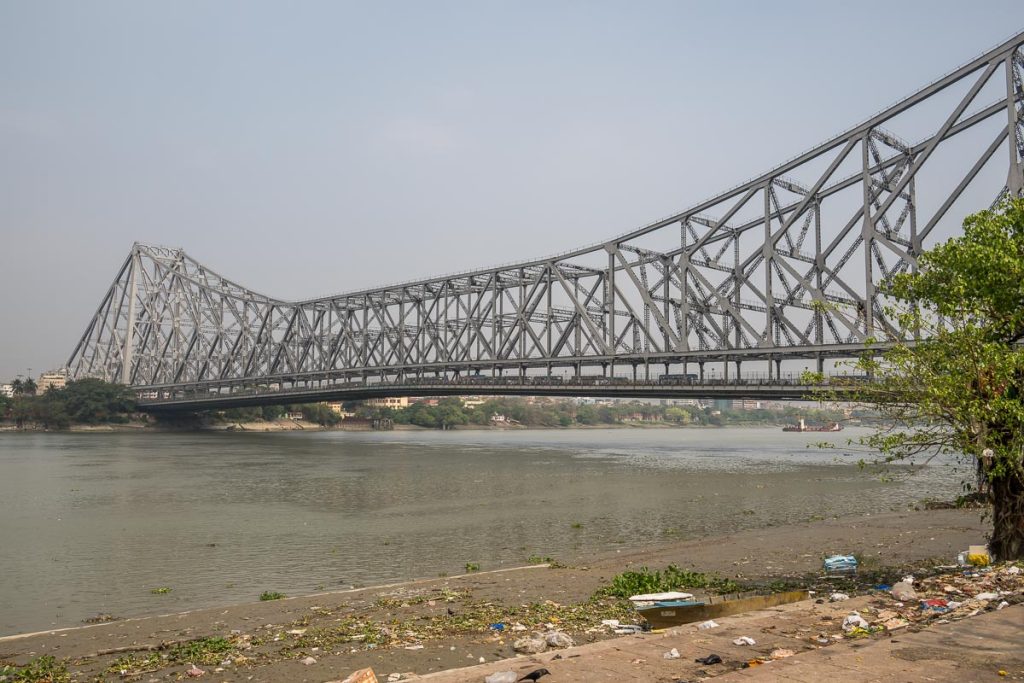
On the day we were there, the going rate for 100 red roses was £1.20. And that was before the haggling began.
Just be careful to avoid getting crushed underfoot by busy porters. They are often carrying sacks of flowers weighing up to 100 kilos on their heads.
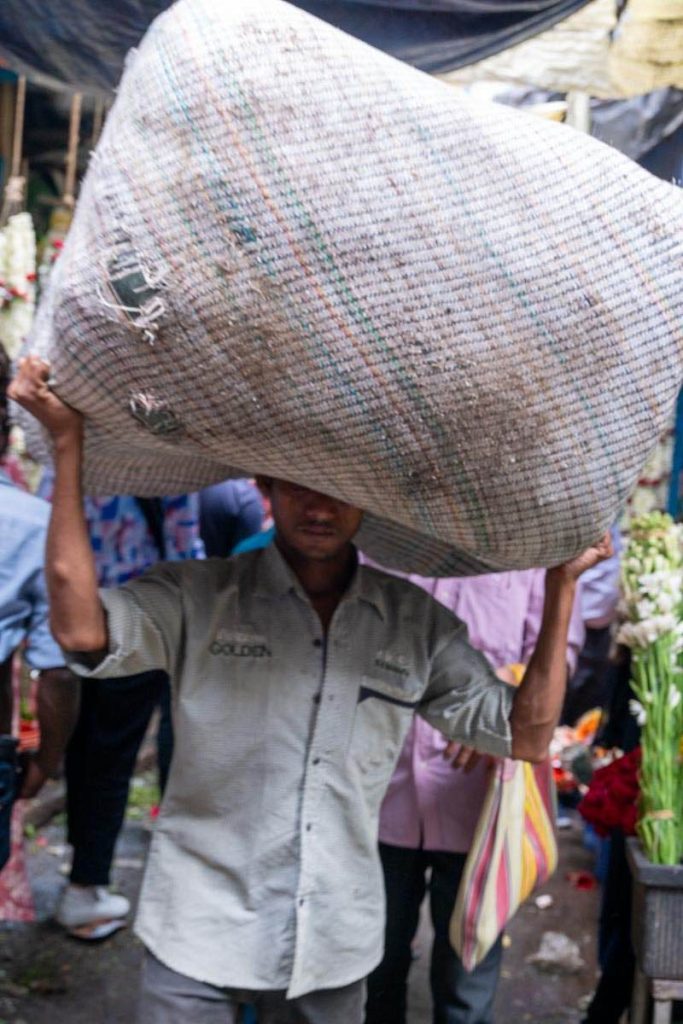
Before they built St Pauls, St Johns Church served as the city’s cathedral. Construction began here in 1787. The church is said to be haunted by the first and perhaps most famous Governor General. Warren Hastings and his horse who both quite literally shared an office here are said to rampage through the grounds at night.
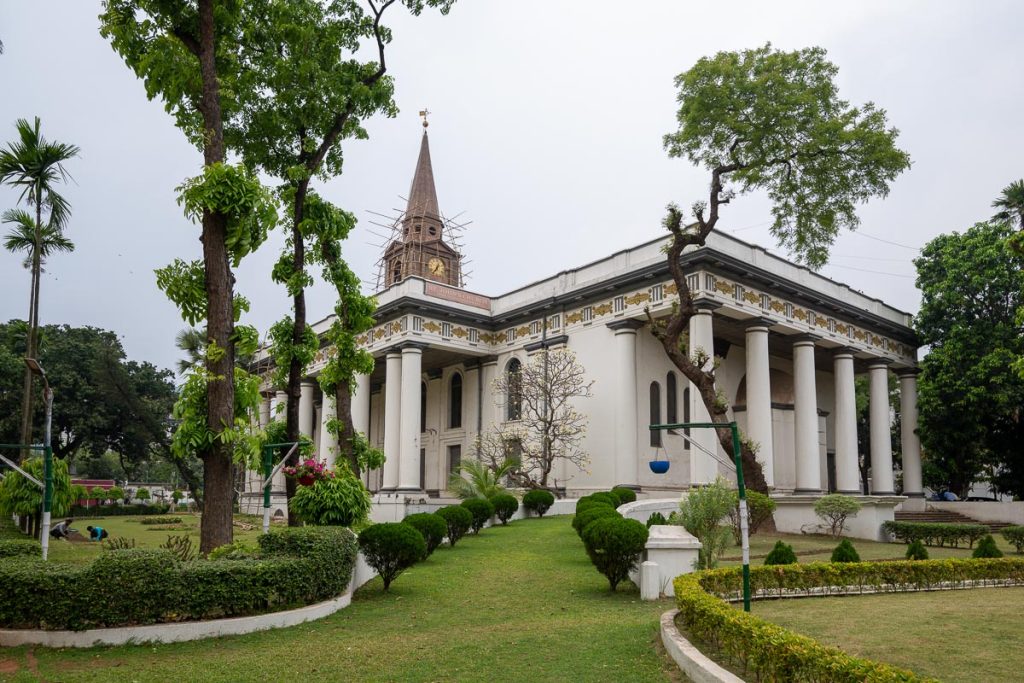
In World War Two, the church suffered bomb extensive damage. It happened during a Japanese air raid. The tower and steeple that has been subsequently added is in a different and somewhat incongruous style.
Black Hole of Calcutta
Here in the grounds, you will find several fascinating tombs and monuments. Including one that commemorates the Black Hole of Calcutta disaster. That was when 123 of the 148 British soldiers died of suffocation. They had been incarcerated overnight inside a tiny cell block by troops loyal to the Nawab of Bengal.
One of the most popular attractions in the city was completed in 1921 by the British Raj. Nicknamed the Taj of the Raj, the Victoria Monument is a glorious mix that echo’s the architectural styles of the Taj Mahal in Agra and St Pauls cathedral in London. It is the largest monument to a monarch anywhere in the world. And it stands in 64 acres of gardens and serves as a museum.
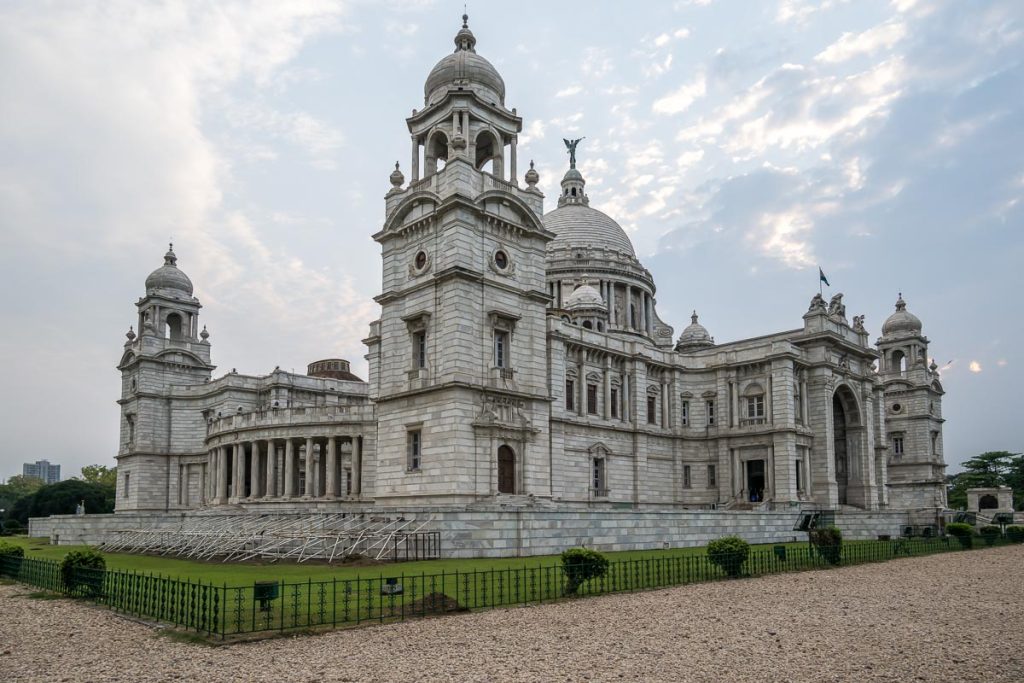
One of its most fascinating of its exhibits, is the world’s largest oil painting on a single canvas. The Jaipur Procession is 23-ft wide by 16.5-ft high. It was painted by the Russian painter Vasily Vereshchagin and shows the Prince of Wales and Maharaja Ram Singh of Jaipur. They are seated on richly caparisoned elephants advancing majestically in a procession in front of the Amber Chowpar in Jaipur in 1876.
Shopping
Truthfully, shopping is not a reason to visit Kolkata. Having told you that, The New Market, formerly known as Sir Stuart Hogg Market, is within walking distance of the Grand Oberoi Hotel. It is a fascinating place in which to go shopping. Originally New Market referred to the original enclosed market, but today locally, the entire area is known as New Market.
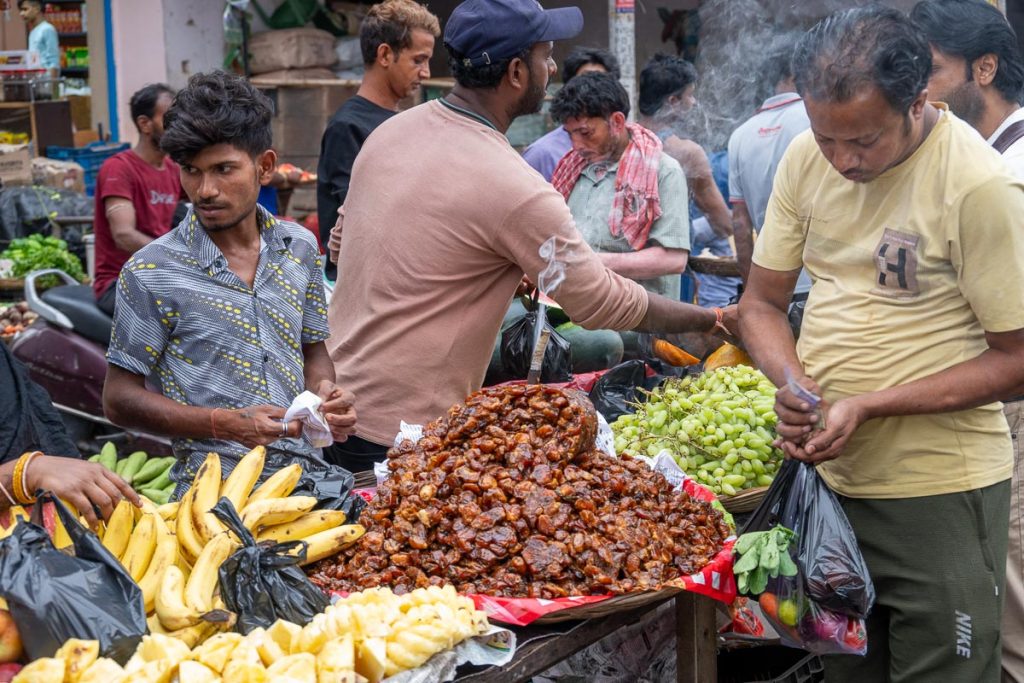
It is said, you can buy everything here from a pin to an elephant. We really enjoyed touring its labyrinth-like levels. Mostly, the prices are fixed. Frequently we found prices dropped when we walked away from the shop and then they became truly apparent.
The market, and the streets that surround it, are surprisingly free from beggars. But we did find the offer from self-appointed guides somewhat annoying. They always wanted us to visit the shop of a friend on the next level.
Getting Around
From rickshaws to trucks, the city of Kolkata is never still. One million people walk across the Howrah Bridge every day with trucks and buses bringing rest.
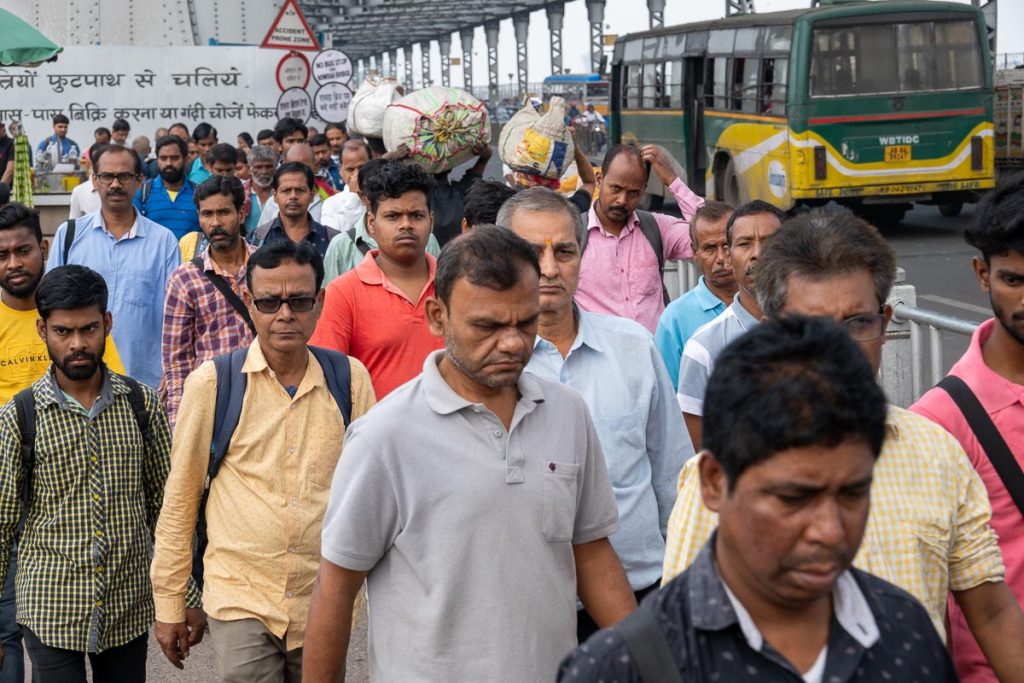
Despite crowded streets and bustling traffic, the city is extremely safe to walk around in. At no time did we feel threatened or uncomfortable.
The ubiquitous yellow, Austin Ambassador, taxi was last built in India in 2014. With a 15-year operating licence, they will be gone from the streets of Kolkata for ever in 2029 which is such a shame. They are cheap to use and easy to hail and, for the most part, well driven. White cabs are also available but are nowhere nearly as photogenic.
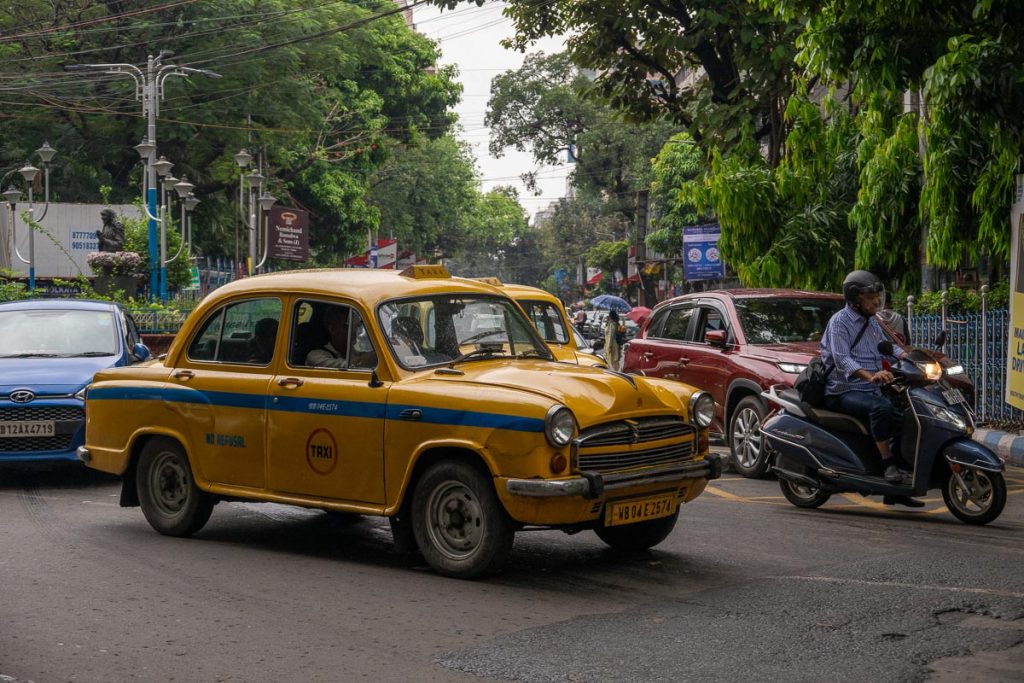
The city has an expanding metro railway and an aging tram service which may well be withdrawn soon. Buses are somewhat basic and tuk tuks are used a great deal by locals. But it seems, the rickshaw is only used by tourists keen to record an Instagram moment.
Eating
Visitors to Kolkata are warned against eating street food and told never to drink the water. But there are exceptions. Try Hot Khali Rolls, a hole in the wall restaurant on Park St. Ask for the Egg and Chicken Roll, you are unlikely to be disappointed.
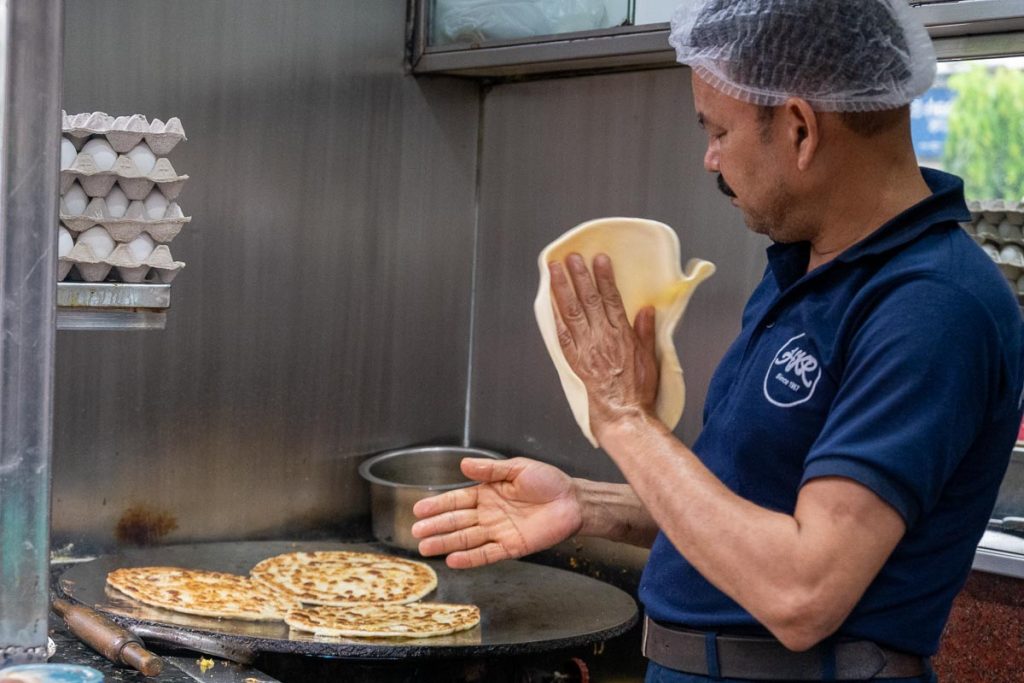
Cooked in front of you in a scrupulously clean environment here is the Kolkata answer to fast food chicken. These rolls cost less than 70 pence each! Eat your heart out KFC, this what fast-food taste and value should be.
We also enjoyed eating in Nizam’s, a sit-down fast-food joint in the new market. And we heard good things about a similar food stall nearby named Kusum Rolls.
Chaotic like the city it is in, dinner service at Flavours of China BBQ on Park Street in Kolkata is somewhat slapdash. But the Indian take on Chinese food is truly inspirational! Try it!
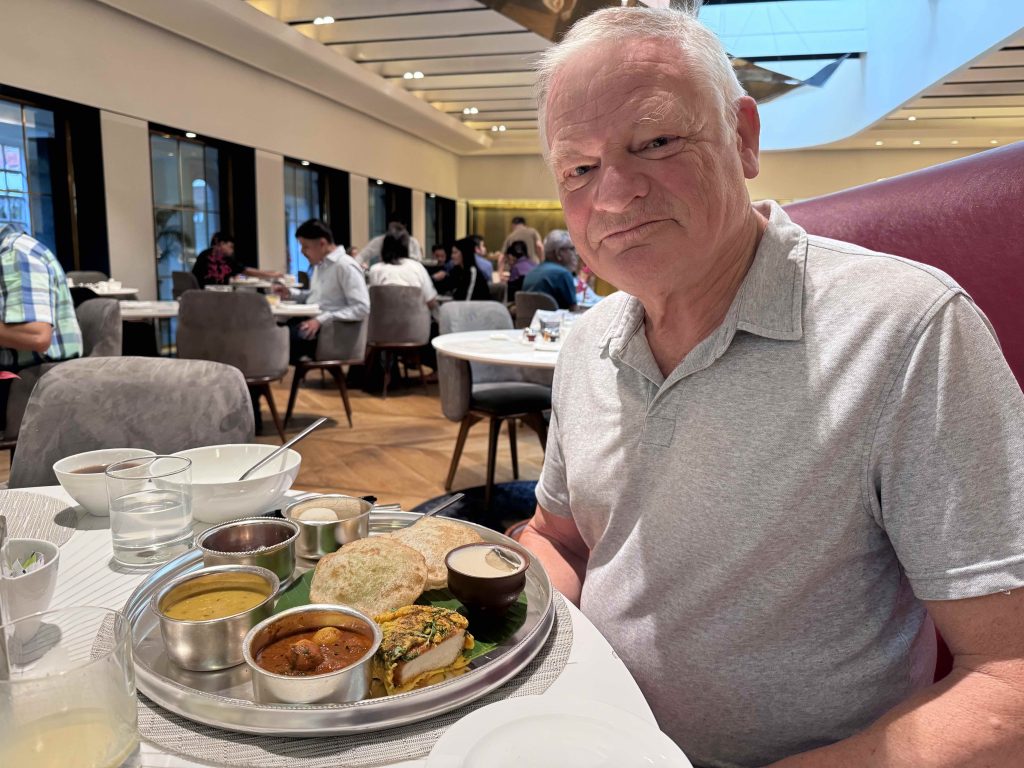
But if you want to be Pukha, then why not eat at Three Sixty-Three restaurant inside the Oberoi Hotel? It serves good food at reasonable prices all day long. Go for breakfast and stay for lunch and call it Brunch!
